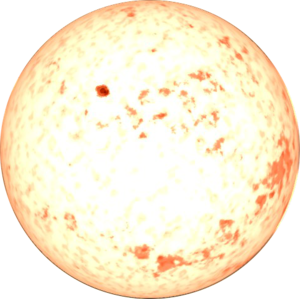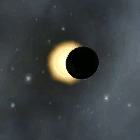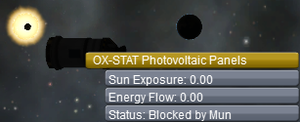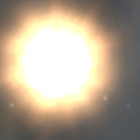Light/ru

Освещение (англ. "Light") делает небесные тела и детали видимыми человеческому глазу и, таким образом, игроку. Существуют два источника освещения:
- Естественный;
- Искусственный.
В настоящее время существует только один естественный источник света, которым является Кербол, центральная звезда Системы Кербола. Он приводит в действие солнечные панели, которые вырабатывают электрический заряд. Также существует возможность добавлять искусственные источники освещения, такие как электрическое освещение для обеспечения видимости деталей, находящихся в тени. Все небесные тела, за исключением Кербола, бросают тень позади себя, которая воспринимается как ночь при нахождении на его поверхности.
Затмения
Eclipses happen when a celestial body passes in front of Kerbol blocking it fully or partially. As of 0.24.2[outdated] it doesn't get dark if Kerbol is blocked by a body which isn't the source of the sphere of influence the craft is in. To determine how complete a body will eclipse Kerbol the angular or apparent diameter (δ) of Kerbol and the eclipsing body must be considered. To calculate the angular diameter of a body the distance to the observer (d) and the radius (r) must be known. The apparent diameter represents the angle the eye have to turn to look from one side of an object to another. The formula to calculate this for a sphere is:
A body can fully eclipse Kerbol only if it is at least close enough to the observer to appear as large as Kerbol. From Kerbin's surface the Mun has an apparent diameter of 1.91° and Kerbol is about 2.20°, so the Mun can almost completely eclipse Kerbol.
Unlike the Mun, which has no inclination to its orbit, any moon which has an inclined orbit can cast or receive eclipses only during specific times during the parent planet's orbit around Kerbol. An inclined moon will eclipse Kerbol relative to its parent body, only when that moon's ascending and descending nodes relative to the planet's orbital plane are aligned with any part of the sun.
The synodic period is the length of time it takes for a moon to reach the same position in a planet's sky relative to the planet's sun. For example, the time between two full moons or two new moons represents the synodic period. In the case of Kerbin and Mun, with it's inclination of 0, the time between two total eclipses or two Munar eclipses is the synodic period. If the orbit of the moon is inclined not every orbit results in an eclipse, therefore the time between eclipses is an exact multiple of the synodic period.
Partial and total eclipses will hide the outshine effect shown on the left.[specify when it is partially] Until the effect disappears and the moon or planet is visible in front of Kerbol, solar panels won't generate electricity.
Интенсивность
The intensity of the light varies depending on the distance. In the real-word it follows the inverse-square law, resulting in four times the intensity when halving the distance. But in Kerbal Space Program the intensity is following a spline curve of 3 piecewise cubics defined from 4 points:
| Расстояние (м.) | Вырабатываемая энергия | Пример |
|---|---|---|
| 0 | 10× | |
| 13,599,840,256 | 1× | Kerbin's orbit |
| 68,773,560,320 | 0.5× | Jool's semi-major axis |
| 206,000,000,000 | 0× | Almost 3x Jool's orbit |



